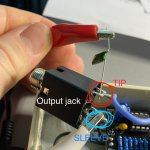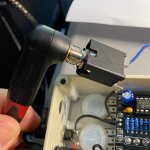Danbieranowski
Well-known member
Having an issue with distortion in the Pythagoras-based Threeverb. I’ve read about the issue and it looks like it could be the Crystal or the surrounding cap. Before I go chasing things down, if anyone has experience with this, am I on the right track?
Heres where I gathered the limited info I have: http://www.spinsemi.com/forum/viewtopic.php?t=635
And here’s what the pedal sounds like:
Heres where I gathered the limited info I have: http://www.spinsemi.com/forum/viewtopic.php?t=635
And here’s what the pedal sounds like:



